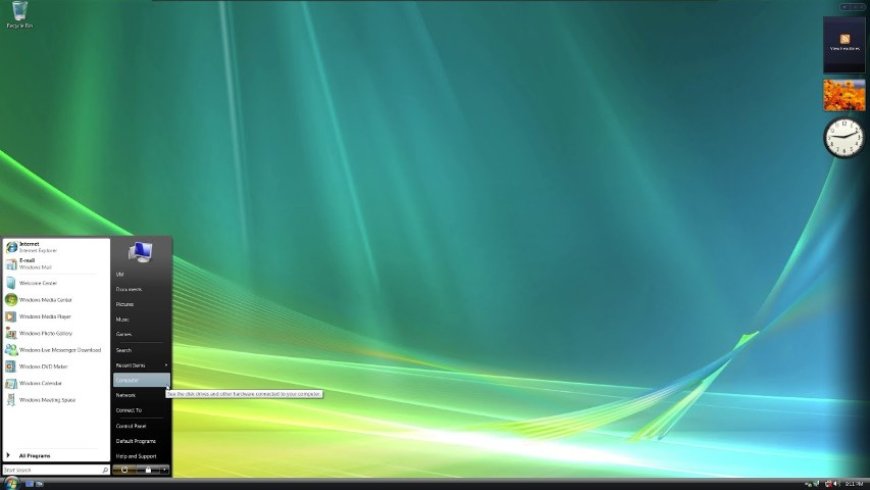NostalTech: Windows Vista in 2024
Remember the days of Aero Glass, UAC pop-ups, and system requirements that felt like a wishlist? Today, let's embark on a journey of nostalgia as we revisit Windows Vista in 2024 – a blast from the tech past or a hidden gem waiting to be rediscovered?

Today, we're taking a trip down memory lane to revisit a piece of software that once defined the Windows experience for many of us – Windows Vista. Fasten your seatbelts, grab a cup of coffee, and let's dive into the nostalgia of one of Microsoft's most talked-about operating systems.
The Arrival of Windows Vista:
Back in the mid-2000s, when flip phones were all the rage and MySpace was our social media haven, Windows Vista made its grand entrance in 2007. Replacing the venerable Windows XP, it promised a sleeker interface, enhanced security features, and a bevy of improvements under the hood.
The Aesthetics:
Who could forget the visually stunning Aero Glass interface that Vista introduced? The transparent windows, the glossy icons – it was like Microsoft had waved a wand and brought our computers into the future. Even today, firing up a virtual machine with Windows Vista feels like unlocking a time capsule from a design standpoint.
Performance Woes:
However, the honeymoon didn't last long. Many users encountered performance issues, blaming the hefty system requirements for putting a strain on their hardware. Vista's appetite for system resources left some older machines gasping for breath. Ah, the days when 2GB of RAM seemed like an extravagant luxury!
The Infamous UAC:
Enter the User Account Control (UAC), Vista's attempt to tighten security. While a commendable effort, it quickly became the bane of users' existence with incessant prompts asking, "Are you sure you want to do this?" It's safe to say that UAC sparked a love-hate relationship with users, leaning more towards the latter.
Driver Compatibility Woes:
One of the major headaches Vista brought to the table was its rocky relationship with hardware drivers. Many peripherals and devices struggled to find compatible drivers, leading to frustration for users who found themselves stuck with unresponsive printers and unsupported graphics cards.
Updates and Service Packs:
Despite the initial hiccups, Microsoft diligently worked on improving Vista's stability. Service Packs were rolled out, addressing performance issues, enhancing compatibility, and refining the overall user experience. The later days of Vista were notably more stable than its initial release.
Legacy and Lessons Learned:
As we look back at Windows Vista in 2024, it's clear that it played a pivotal role in shaping the evolution of Windows. Microsoft learned valuable lessons that influenced subsequent releases, leading to the polished experiences we enjoy with Windows 10 and beyond. Vista might have stumbled, but it paved the way for the resilient Windows ecosystem we have today.
So, was Windows Vista a misunderstood gem or a troublesome misstep? The answer lies in the memories and experiences of the users who interacted with it. Whether you faced its quirks head-on or admired its aesthetic leap, there's no denying that Windows Vista holds a special place in the hearts of tech enthusiasts who witnessed its rise and fall. Cheers to the OS that dared to be different!







